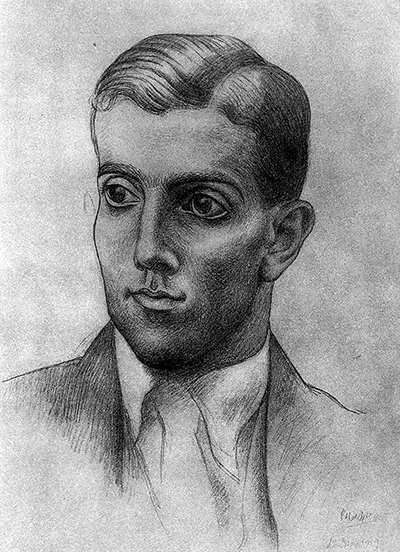From the 1910's, Picasso began collaborating with ballet companies, composers, musicians and writers, designing sets, costumes and promotional material. In particular, Picasso worked for Ballets Russes under Sergei Diaghilev, an itinerant theatre company based in Paris which achieved a reputation for experimental, sensational and avant-garde interpretations of the art of ballet. They commissioned groundbreaking work from Claude Debussy, Sergei Prokofiev and—perhaps most famously—Igor Stravinsky. It was here, in 1917, that Picasso worked closely with Massine on the production of Erik Satie's Parade.
For Parade, Picasso designed the sets, costumes and curtains for the performance, where Massine choreographed the ballet. This was Picasso's first foray into ballet design and a chance for him to prove himself and his Cubist style adaptable to broad cultural movements in Europe. Massine and Picasso struck a close professional and personal relationship that would see Picasso design several of Massine's choreographed ballets, including Le Tricorne (El Sombrero de Tres Picos), which premiered in London in 1919 at the time of Portrait of Leonide Massine's completion. Following Le Tricorn, Picasso and Massine worked on a further two ballets together. Aside from this portrait of Massine, Picasso created several other portraits and caricatures of Massine during his lifetime.
Portrait of Leonide Massine is an intimate and personal portrait that was not meant to be widely published, distributed or exhibited. It is taken from his notebooks and was no doubt intended, like many of his portraits, as a memento and gift celebrating his colleagues achievements. Aside from his fame in painting, sculpting and printmaking, Picasso drew caricatures, cartoons and pencil sketches of his friends in an idiosyncratic way, often—but not always—shaped by his favoured style during its period of creation. Picasso is of course renowned for the Cubust, Surrealist and neoclassical styles he adopted at the height of his success. The period in which Portrait of Leonide Massine was sketched is classified as his neoclassical period (late 1910s-1920s).

